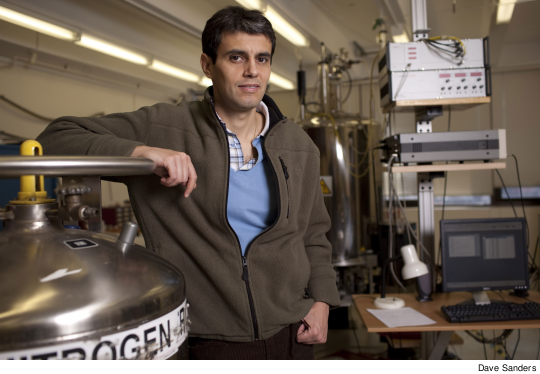 |
CUNY and the PSC have finalized agreement on new guidelines for the PSC-CUNY Research Awards, which will govern a three-year pilot program beginning this year.
The application deadline for this cycle of awards is January 28, 2011. In future years, the deadline will be January 15, but it was extended this year due to the time it took to work out all the details of the pilot program. All applications, as in the past, must be submitted electronically; for most awards, the project description will be limited to three pages.
GUIDELINES
Full text of the new guidelines are on the CUNY Research Foundation website. Details on the online application process are also online.
Under the new guidelines, applications must now be submitted for one of three categories of awards:
- “Traditional A” Awards, of up to $3,500.
- “Traditional B” Awards, of more than $3,500 and up to $6,000.
- Enhanced Awards, of more than $6,000 and up to $12,000.
Last year the average award was about $3,400. This year the largest number of grants will be Traditional A Awards, with about 75-80% of the money available for the two Traditional Awards allocated to the Traditional A category.
ENHANCED AWARDS
The most competitive category is expected to be the Enhanced Awards, of up to $12,000; this category requires a more extensive project description and budget justification, and no more than 40 Enhanced Awards will be made each year.
“I want to thank members for being patient while the new guidelines were being established; Many of you have been eager to see the new guidelines so you can get started on applications,” said PSC President Barbara Bowen. “By extending the deadline to the end of January, we hoped to create enough time for you to prepare. Although CUNY and the PSC had reached general agreement on the pilot program with CUNY in August, the range of options in the program meant that it took us longer than expected to develop new joint guidelines.”
In a change from the past, selection panels will not reduce requested budgets; if an award in any category is granted, it will be funded in full. The appropriateness of the budget request is, therefore, a major factor in evaluating the proposal; it should be clear that a proposed budget is accurate and realistic.
As in the past, applications for released time must be for $3,990, and thus should be made as part of a proposal for the Traditional B or Enhanced Awards. Summer salary, however, will now be available at amounts up to $3,500, and can be applied for in the Traditional A category. In addition, the total income limit for summer salary applicants has been raised to $88,418 for the 2010-11 academic year.
During the three-year pilot program, tenured faculty may not receive more than two awards, and only one of these may be an Enhanced Award.
Funding for the Enhanced Awards is “new money,” a combination of administrative savings and an additional CUNY contribution to the program. (For more on the discussions that led to the new guidelines, see Clarion coverage in the September 2010 issue.)
As established in Article 26 of the union contract, funds for PSC-CUNY Awards are available to all full-time members of the instructional staff represented by the PSC, and to untenured faculty in particular. Part-time faculty and professional staff should note that the PSC has negotiated additional professional development funds for which they can apply. Information and applications for the HEO/CLT Professional Development Fund and the Adjunct Professional Development Fund are on the PSC website.
CHOICES
The biggest question for many faculty applying for the restructured PSC-CUNY Research Awards will probably be under which category to apply. In a meeting about the new program, one junior faculty member said, “I don’t like to gamble, and this feels like a gamble to me.” It should be borne in mind, however, that while the average award in the past was less than $3,500, many applicants asked for almost twice that amount, expecting that their budget request would be reduced. Because selection panels will no longer reduce requested budgets, this part of the application process will be more clear-cut.
STRATEGY
One guideline in choosing the category for your application might be: if you believe you can do your project well for $3,500 or less, apply for that amount – and note that the largest allocation of funds will be in the Traditional A category. If you feel your project is truly not possible with less than, say, $5,000 in support, then apply for a Traditional B Award. And if you feel that your project cannot be done unless you receive more than $6,000 in funding, apply for one of up to 40 Enhanced Awards, bearing in mind that there are fewer of these grants and that they involve more extensive review.
“Our goal in revamping the program on a pilot basis was to open it up to as many members as possible – particularly to junior faculty – and to recognize that different kinds of projects can require substantially different amounts of funding,” said PSC President Bowen. “I know from my own experience that $3,500 can jump-start a research project, but that amount is not meaningful for certain other projects – for example, those that require more expensive equipment or more staff.”
“I launched a lot of my own research through PSC-CUNY Awards, spending several memorable summers doing archival work in the British Library,” Bowen added. “I was armed with an early Zenith laptop that weighed about 20 pounds, purchased through a PSC-CUNY grant, and assisted by a CUNY undergraduate who went on to earn a doctorate in English. I am a huge advocate of these awards, and I want them to work for our members.”

